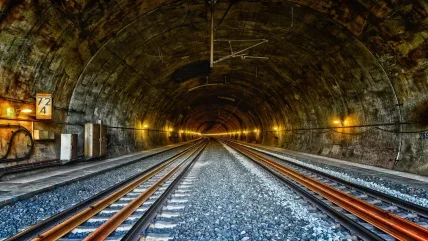
Construction has advanced on the Jintang Undersea Tunnel in eastern China with the start of offshore excavation works.
The project, which is being executed by China Railway’s 14th Bureau Group, is set to become the world’s longest undersea high-speed railway tunnel.
According to a report from the CGTN news channel, the Dinghai tunnel boring machine (TBM) began excavation at 42m below sea level near Zhoushan City, marking a major milestone for the undersea high-speed railway tunnel project.
The Jintang Undersea Tunnel, spanning 16.2km, will connect Ningbo City’s Beilun District to Zhoushan City as a critical component of the 77km Ningbo-Zhoushan Railway. Completion of the tunnel project is anticipated to occur by 2028.
The tunnel’s construction officially started in mid-May 2024. At its deepest, it will extend 78m below sea level and include an 11.2km shielded section supporting train speeds of up to 250 km/h. The project faces challenges due to geological conditions, requiring modifications to the TBMs to manage 28 geological strata transitions.
The Yongzhou TBM, working from Ningbo, measures 135m in length, weighs 4,350 tonnes, and features 308 custom-designed cutters.
Upon completion, the Jintang Undersea Tunnel will be the world’s third-longest undersea railway tunnel, after Japan’s Seikan Tunnel and the Channel Tunnel between the UK and France.
Currently, Zhoushan and Ningbo are connected by a cross-sea bridge and ferries. The tunnel aims to reduce travel time to 30 minutes, down from the current 1.5-hour journey.
The Jintang Undersea Tunnel passes under the Jintang Channel, a vital shipping route for Zhoushan Port, one of the world’s busiest by freight volume. The Chinese tunnelling project involves navigating complex marine environments, crossing beneath oil pipelines, seawalls, docks, and shipping lanes.
Earlier this week, China Railway 14th Bureau Group announced that tunnelling for Beijing Subway Line 17 has been completed, following the drilling of its middle section.







